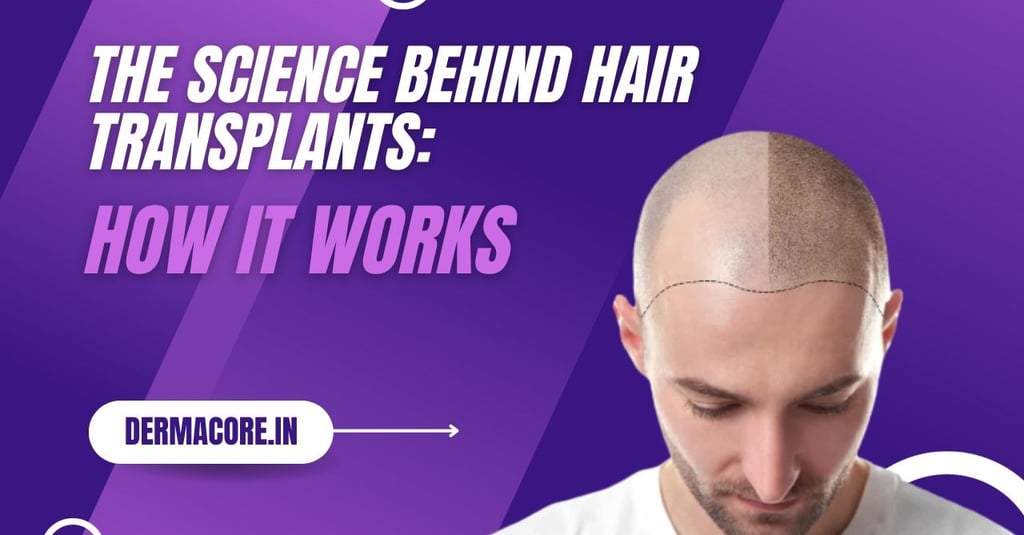The Science Behind Hair Transplants: How It Works
For many people, losing their hair can be a distressing experience that lowers their confidence and sense of self. Thankfully, advancements in medical science have provided an effective solution: hair transplants
HAIR TRANSPLANT
Varun Mishra
7/29/20232 min read


For many people, losing their hair can be a distressing experience that lowers their confidence and sense of self. Thankfully, advancements in medical science have provided an effective solution: hair transplants. But how do these procedures work? In this comprehensive guide, we'll delve into the science behind hair transplants, demystifying the process and shedding light on how it can help you regain a full head of hair.
Understanding Hair Loss
Before we dive into the science of hair transplants, it's crucial to understand why hair loss occurs. Hair loss can be attributed to various factors, including genetics, hormonal changes, and aging. It primarily occurs due to the shrinking of hair follicles, which results in finer, shorter hair and, eventually, baldness.
The Hair Transplant Procedure
Hair transplantation is a surgical procedure that involves relocating hair follicles from one part of the body (known as the donor site) to the balding or thinning area (the recipient site). In hair transplants, two main procedures are used:
1. Follicular Unit Transplantation (FUT): In FUT, a strip of skin containing healthy hair follicles is removed from the donor area, typically the back of the head. The surgeon then dissects the strip into individual follicular units and transplants them into the recipient site.
2. Follicular Unit Extraction (FUE): FUE involves the extraction of individual hair follicles directly from the donor area using a micro-punch tool. The recipient location is then given the transplanted follicles.
The Science Behind Hair Growth
Once the hair follicles are transplanted, they follow a natural growth cycle. Understanding this cycle is key to comprehending the science behind how hair transplants work:
1. Anagen Phase: This is the active growth phase, during which hair follicles produce new hair. Anagen phase varies in duration but typically lasts between two to six years.
2. Catagen Phase: After the anagen phase, the hair enters a transitional phase called catagen. The hair follicle contracts during this phase and separates from the blood supply.
3. Telogen Phase: The final phase is telogen, also known as the resting phase. Hair remains in this state for a few weeks to a few months before falling out.
The transplanted hair follicles initially go through a shedding phase, which is entirely normal. Afterward, they enter the anagen phase, and new, permanent hair growth begins at the recipient site.
Conclusion
Hair transplants are a scientifically proven solution for hair loss, offering natural-looking results that can restore your confidence and self-esteem. By understanding the science behind hair transplants and the growth cycle of hair follicles, you can make an informed decision if you're considering this transformative procedure.
If you're interested in learning more about the benefits, risks, and success stories of hair transplants, stay tuned for our upcoming posts. Remember, consulting with a qualified hair transplant specialist is the first step toward a fuller, more confident you.
Dermacore
3/285, Vivek Khand, Near Neelkanth Sweets, Gomti Nagar, Lucknow, 226010-U.P.
☏ 6386858427, 7607999766
✉ support@dermacore.in
